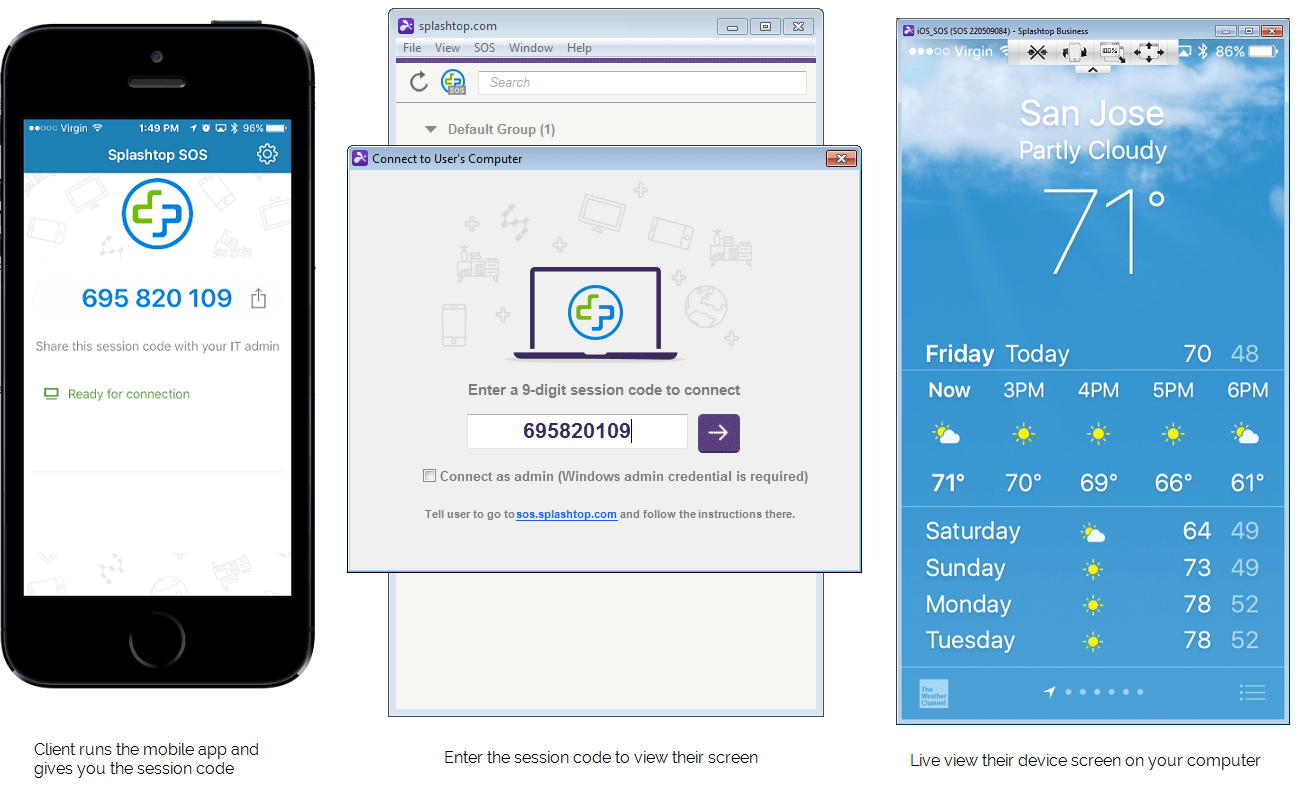Mar 29, 2019 How to Manage Files on Android with a Mac. One great feature of an Android device is the capability of managing files from the folder itself. On a PC, once you connect the USB cable from the device to the computer, you will be able to.
When building an Android app, it's important that you always test your app ona real device before releasing it to users. This page describes how to set upyour development environment and Android device for testing and debugging overan Android Debug Bridge (ADB) connection.
Note: Use the Android emulator to test your app ondifferent versions of the Android platform and different screen sizes. Alsoconsider using Firebase Test Labto run your app on a wide variety of real devices hosted in acloud-based infrastructure.Set up a device for development
Before you can start debugging on your device, there are a few things you mustdo:
On the device, open the Settings app, select Developer options, andthen enable USB debugging.
Note: If you do not see Developer options, follow the instructions toenable developer options.Set up your system to detect your device.
- macOS: No additional configuration required.
Ubuntu Linux: Use
apt-get installto install theadbpackage. Thisgives you a community-maintained default set ofudevrules for all Androiddevices.Make sure that you are in the plugdev group. If you see the followingerror message, adb did not find you in the plugdev group:
Use
idto see what groups you are in. Usesudo usermod -aG plugdev$LOGNAMEto add yourself to the plugdev group.The following example shows how to install the Android adb tools package.
Windows: Install a USB driver for ADB. For an installation guide andlinks to OEM drivers, see the Install OEM USB driversdocument.
Chrome OS: No additional configuration required.
Connect to your device
/smartphone-apps-171278241-574880f73df78ccee1be85f6.jpg)
When you are set up and plugged in over USB, you can click Run in Android Studio to build and run your app on the device.
You can also use adb to issue commands,as follows:

- Verify that your device is connected by running the
adb devicescommandfrom yourandroid_sdk/platform-tools/directory. Ifconnected, you'll see the device listed. - Issue any adb command withthe
-dflag to target your device.
Troubleshoot device connection with the Connection Assistant
The Connection Assistant provides step-by-step instructions to help you set upand use a device over the ADB connection.
To start the assistant, choose Tools > Connection Assistant.
The Connection Assistant provides instructions, in-context controls, and a listof connected devices in a series of pages in the Assistant panel. Use theNext and Previous buttons at the bottom of the Assistant panel towork through the pages as needed:
- Connect your device over USB: The Connection Assistant begins by promptingyou to connect your device over USB, and it provides a Rescan USB devicesbutton with which you can start a new scan for connected devices.
- Enable USB debugging: The Connection Assistant then tells you how toenable USB debugging in the on-device developer options.
- Restart the ADB server: Finally, if you still don't see your device on thelist of available devices, you can use the Restart ADB server button on thelast page of the Connection Assistant. Restarting the ADB server also causesADB to scan for devices again. If you still don't see your device on the listof available devices, try the troubleshooting steps in the next section of thispage.
Resolve USB connection issues
If the Connection Assistant is not detecting your device over USB, you can trythe following troubleshooting steps to resolve the issue:
Check that Android Studio can connect to the Android Emulator
To check if the issue is being caused by a connection problem between AndroidStudio and the Android Emulator, follow these steps:
- Open the AVD Manager.
- Create a new AVD if you don't alreadyhave one.
- Run the emulator using your AVD.
- Do one of the following:
- If Android Studio can't connect to the emulator, download the latest SDK Platform Toolsand then try again.
- If the emulator starts successfully, check the USB cable.
Check the USB cable
Android On Mac
To check if the issue is being caused by a faulty USB cable, follow the steps inthis section.
If you have another USB cable:
- Connect the device using the secondary cable.
- Check if the Connection Assistant can now detect the device.
- If the device is not detected, try the primary cable again.
- If the device still isn't detected, assume that the problem is with thedevice and check if the device is set up for development.
If you don't have another USB cable but you do have another Android device:
- Connect the secondary device to your computer.
If the Connection Assistant can detect the secondary device, assume that theproblem is with the primary device andcheck if the device is set up for development.
If the secondary device is not detected, the problem might be with the USBcable.
Android Device App For Mac Free
Check if the device is set up for development
To check if the issue is being caused by settings on the device, follow thesesteps:
- Follow the steps in the Set up a device for developmentsection.
- If this does not resolve the problem, contact the device OEM'scustomer support for help. Tell the customer support representative that thedevice won't connect to Android Studio using ADB.
RSA security key
Android Device App For Mac Pro
When you connect a device running Android 4.2.2 (API level 17) or higher to yourcomputer, the system shows a dialog asking whether to accept an RSA key thatallows debugging through this computer. This security mechanism protects userdevices because it ensures that USB debugging and other adb commands cannot beexecuted unless you're able to unlock the device and acknowledge the dialog.